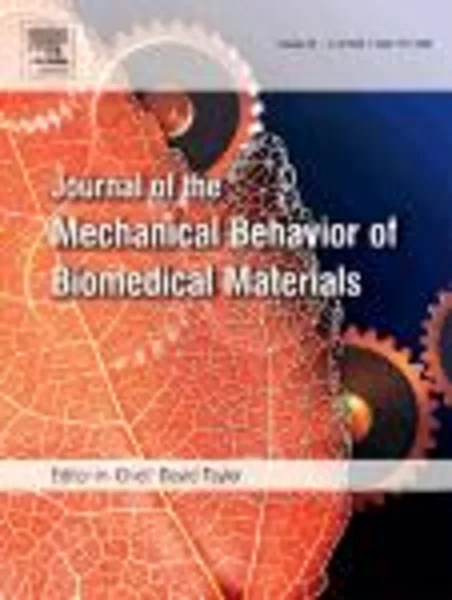-
multiscale mechanobiology of de novo bone generation, remodeling and adaptation of autograft in a common ovine femur model
جزئیات بیشتر مقاله- تاریخ ارائه: 1394/01/01
- تاریخ انتشار در تی پی بین: 1394/01/01
- تعداد بازدید: 680
- تعداد پرسش و پاسخ ها: 0
- شماره تماس دبیرخانه رویداد: -
the link between mechanics and biology in the generation and the adaptation of bone has been studied for more than a century in the context of skeletal development and fracture healing. however, the interplay between mechanics and biology in de novo generation of bone in postnatal defects as well as healing of morcellized bone graft or massive cortical bone autografts is less well understood. to address this, here we integrate insights from our previously published studies describing the mechanobiology on both de novo bone generation and graft healing in a common ovine femoral defect model. studying these effects in a common experimental model provides a unique opportunity to elucidate factors conducive to harnessing the regenerative power of the periosteum, and ultimately, to provide mechanistic insights into the multiscale mechanobiology of bone generation, remodeling and adaptation. taken together, the studies indicate that, as long as adequate, directional transport of cells and molecules can be insured (e.g. with periosteum in situ or a delivery device), biological factors intrinsic to the periosteum suffice to bridge critical sized bone defects, even in the absence of a patent blood supply. furthermore, mechanical stimuli are crucial for the success of periosteal bone generation and bone graft healing. interestingly, areas of highest periosteal strain around defects correlate with greatest amounts albeit not greatest mineralization of newly generated bone. this may indicate a role for convection enhanced transport of cells and molecules in modulation of tissue generation by pluripotent cells that ingress into the defect center, away from the periosteum and toward the surface of the intramedullary nail that fills the medullary cavity. these insights bring us much closer to understanding the mechanobiological environment and stimuli that stimulate the proliferation and differentiation of periosteum-derived progenitor cells and ultimately drive the generation of new bone tissue. furthermore, these insights provide a foundation to create virtual predictive computational models of bone mechanophysiology, to develop cell seeding protocols for scale up and manufacture of engineered tissues, to optimize surgical procedures, and to develop post-surgical therapies with the ultimate goal of achieving the best possible healing outcomes for treatment and/or reconstruction of postnatal bone defects.
مقالات جدیدترین رویدادها
-
استفاده از تحلیل اهمیت-عملکرد در ارائه الگوی مدیریت خلاقیت سازمانی و ارائه راهکار جهت بهبود
-
بررسی تاثیر ارزش وجوه نقد مازاد بر ساختار سرمایه شرکت های پذیرفته شده در بورس اوراق بهادار تهران
-
بررسی تأثیر سطح افشای ریسک بر قرارداد بدهی شرکت های پذیرفته شده در بورس اوراق بهادار تهران
-
بررسی تأثیر رتبه بندی اعتباری مبتنی بر مدل امتیاز بازار نوظهور بر نقد شوندگی سهام با تأکید بر خصوصی سازی شرکت ها
-
تأثیر آمیخته بازاریابی پوشاک ایرانی بر تصویر ذهنی مشتری پوشاک ایرانی (هاکوپیان)
-
پیکربندی زنجیره تامین با استفاده از الگوریتم دو مرحله ای بهینه سازی فازی چبیشف
-
اثر بخشی تعلیم و تربیت بر رفتار شهروندی
-
اصلاح خواص قیر به وسیله پلیمرهای تازه تولید شده و ضایعات پلیمرها
-
error modeling of seebeck coefficient measurements using finite-element analysis
-
the analysis of lock forming mechanism in the clinching joint
مقالات جدیدترین ژورنال ها
-
مدیریت و بررسی افسردگی دانش آموزان دختر مقطع متوسطه دوم در دروان کرونا در شهرستان دزفول
-
مدیریت و بررسی خرد سیاسی در اندیشه ی فردوسی در ادب ایران
-
واکاوی و مدیریت توصیفی قلمدان(جاکلیدی)ضریح در موزه آستان قدس رضوی
-
بررسی تاثیر خلاقیت، دانش و انگیزه کارکنان بر پیشنهادات نوآورانه کارکنان ( مورد مطالعه: هتل های 3 و 4 ستاره استان کرمان)
-
بررسی تاثیر کیفیت سیستم های اطلاعاتی بر تصمیم گیری موفق در شرکتهای تولیدی استان اصفهان (مورد مطالعه: مدیران شرکتهای تولیدی استان اصفهان)
-
تدوین استراتژی منابع انسانی شرکت شیر پاستوریزه پگاه گیلان با استفاده از رویکرد تحلیل عوامل استراتژیک (swot) و ماتریس برنامه ریزی استراتژیک کمی (qspm)
-
آنالیز و تحلیل سرسیلندر موتورهای بنزینی با استفاده از سیمولیشن حرارتی نرم افزار سالیدورک
-
بررسی رابطه نشخوار فکری با تعارضات زناشویی در افراد مراجعه کننده به مرکز مشاوره در شهر گنبد در سال 1396
-
the best location of belt truss system in tall buildings using multiple criteria subjected to blast loading
-
effects of site-dependent errors on the accuracy of c/a code dgps positioning




سوال خود را در مورد این مقاله مطرح نمایید :